23. DAWN REDWOOD
Metasequoia glyptostroboides
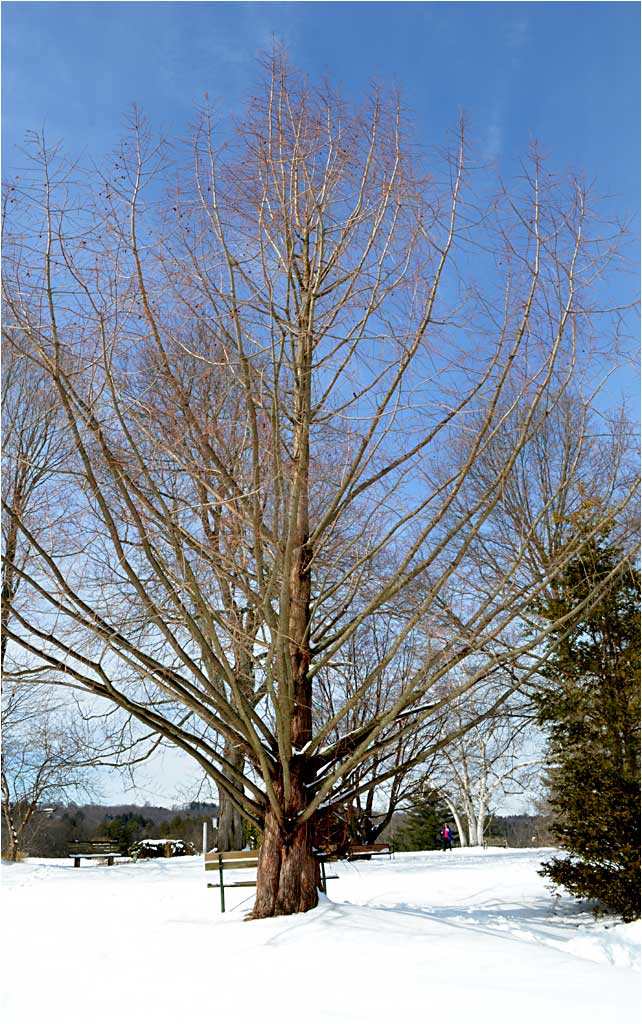
A visit to one of the most unique trees in the Arboretum, the Dawn Redwood. Closely related to the Sequoia trees, this tree is an evergreen which begs the question: "Where are its leaves?" It is one of three species in the Arboretum that are deciduous evergreens, trees that do everything else like evergreens but do not keep their leaves.
SPRING

The Dawn Redwood was also thought to be extinct until the 1940s when they were suddenly found in a valley in central China. After WW II they became the darling of the botanical world, and their seeds were distributed world wide. This specimen was planted by Douglas Jackson here in 2005 - so it is extremely large for such a young tree. No one really knows what the upper limit for them in the U.S. is - but it may turn out to be the tallest tree in the park within 25 years.
SPRING NEW GROWTH, OLD CONES
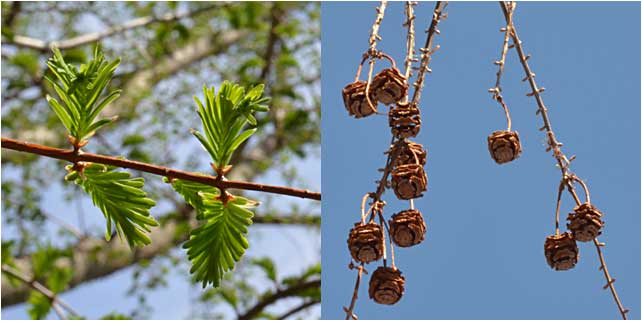
You see the new annual foliage emerging (left). It attaches to the branch like most conifers do, and its flat needles are consistent with conifers as a group. The female cones mature in the fall, but may stay on the tree over winter if conditions to spread their seeds are not optimal (right).
SUMMER GLORY
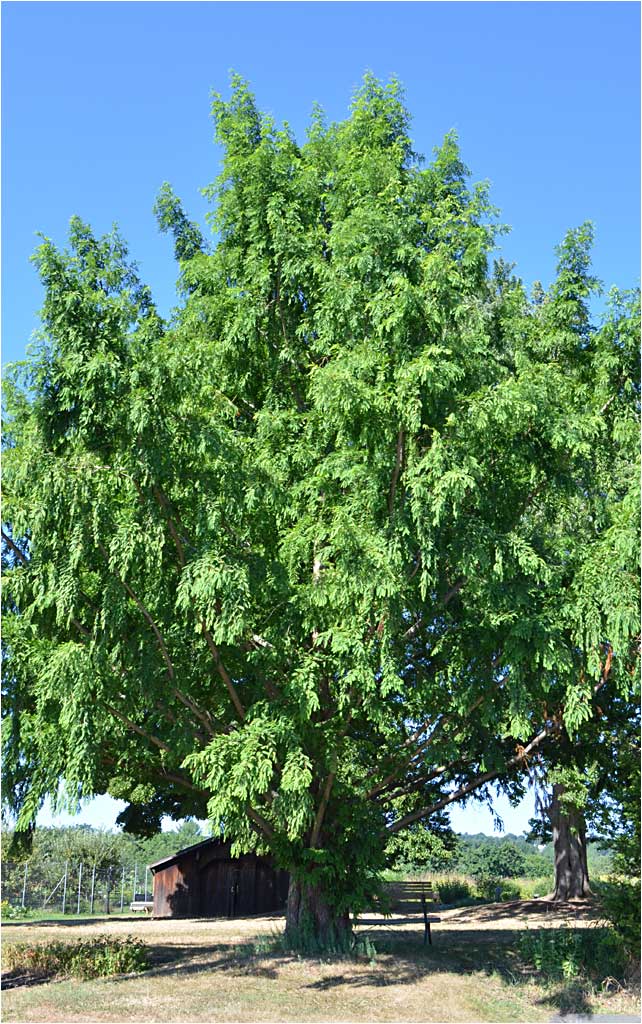
Luxuriant with summer foliage, this young Dawn Redwood is a very impressive tree. All Dawn Redwoods, worldwide, have descended from the seeds of the original ones found in the valley in Hubei Province, China. Prior to their discovery in the 1940s, the species was known to exist, but only because of fossil records of three different Metasequoia species. Today, it is the only species in its genus.
BUSY SPRING
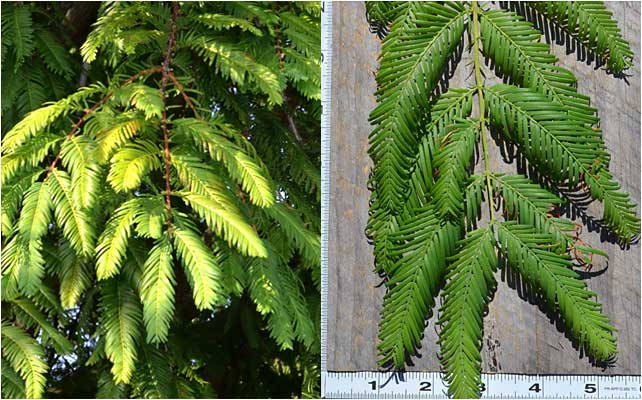
There is a somewhat similar species at The Westmoor Arboretum (Bald Cypress) with very similar leaf structure. However, as seen here (right), the Dawn Redwood's leaves are arranged oppositely. The Bald Cypress are alternate. New foliage is a lighter shade of green, soon darkening.
FALL, DECIDUOUS CONIFER
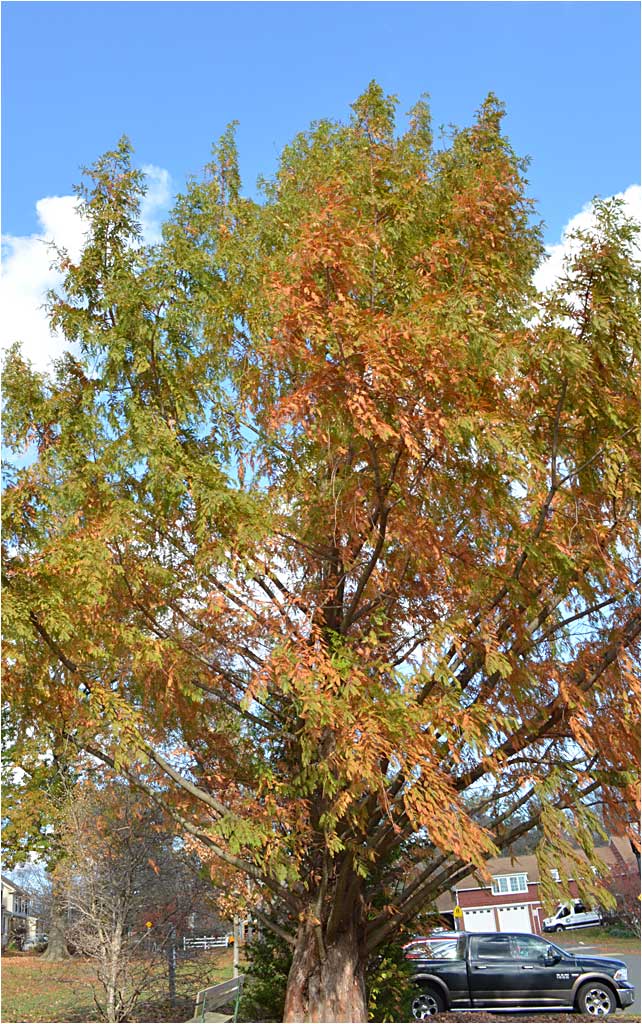
The Dawn Redwood turns a light shade of rust each Fall before dropping all of its leaves. We have 3 "deciduous conifers" at the Arboretum, the Dawn Redwood, Bald Cypress, and European Larch. While this tree has its origins in China, at one time the species was distributed globally (millions of years ago). Scientists are studying the Dawn Redwood to see which insects and other microorganisms will form relationships with it.
FALL COLOR, MALE CONES

The leaves turn orange/rust from the outer needle to the interior (left. On the right are spent male pollen cones. They fertilize the female cones in Spring, but often stay on the tree for several seasons, including Winter.